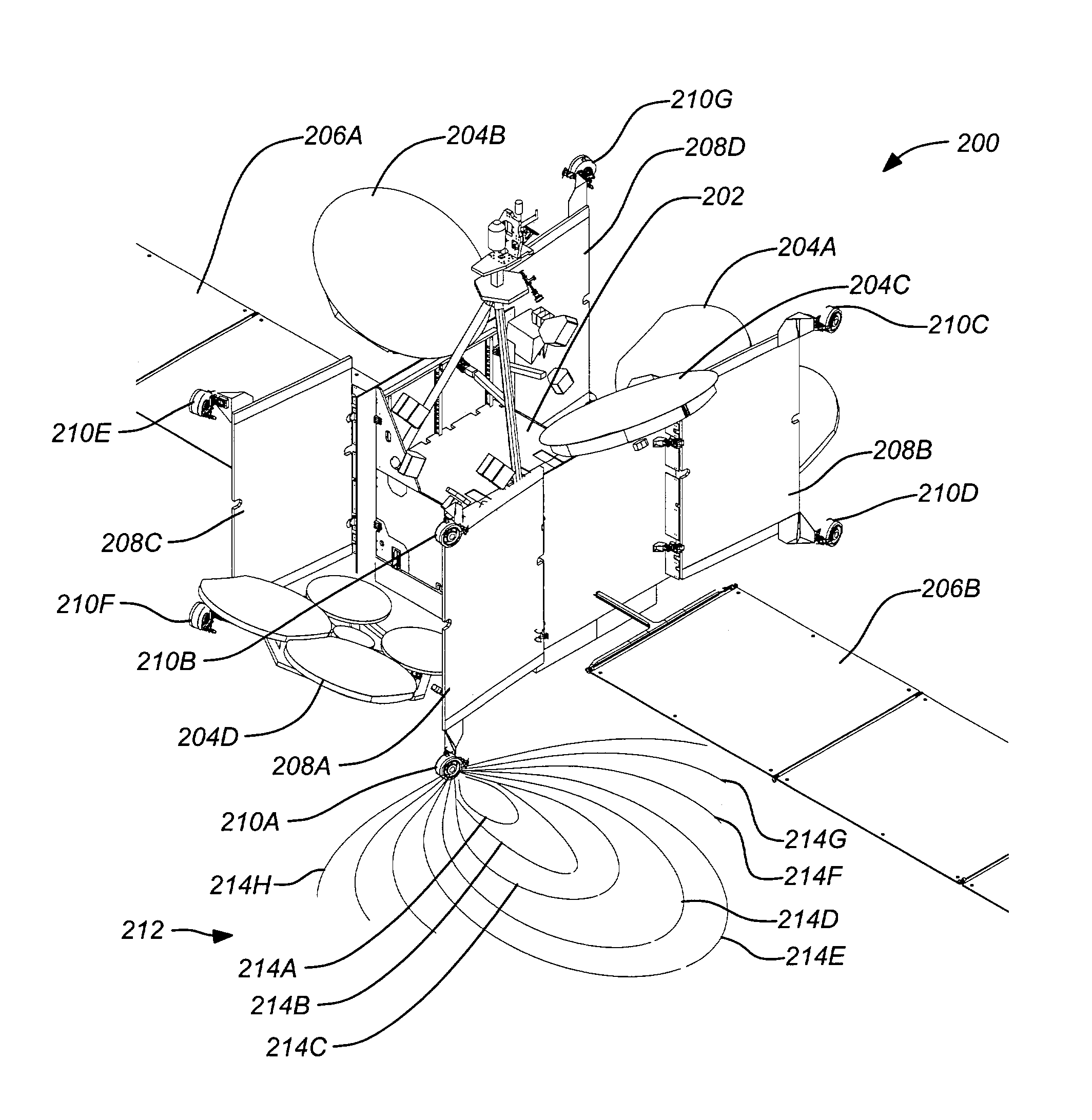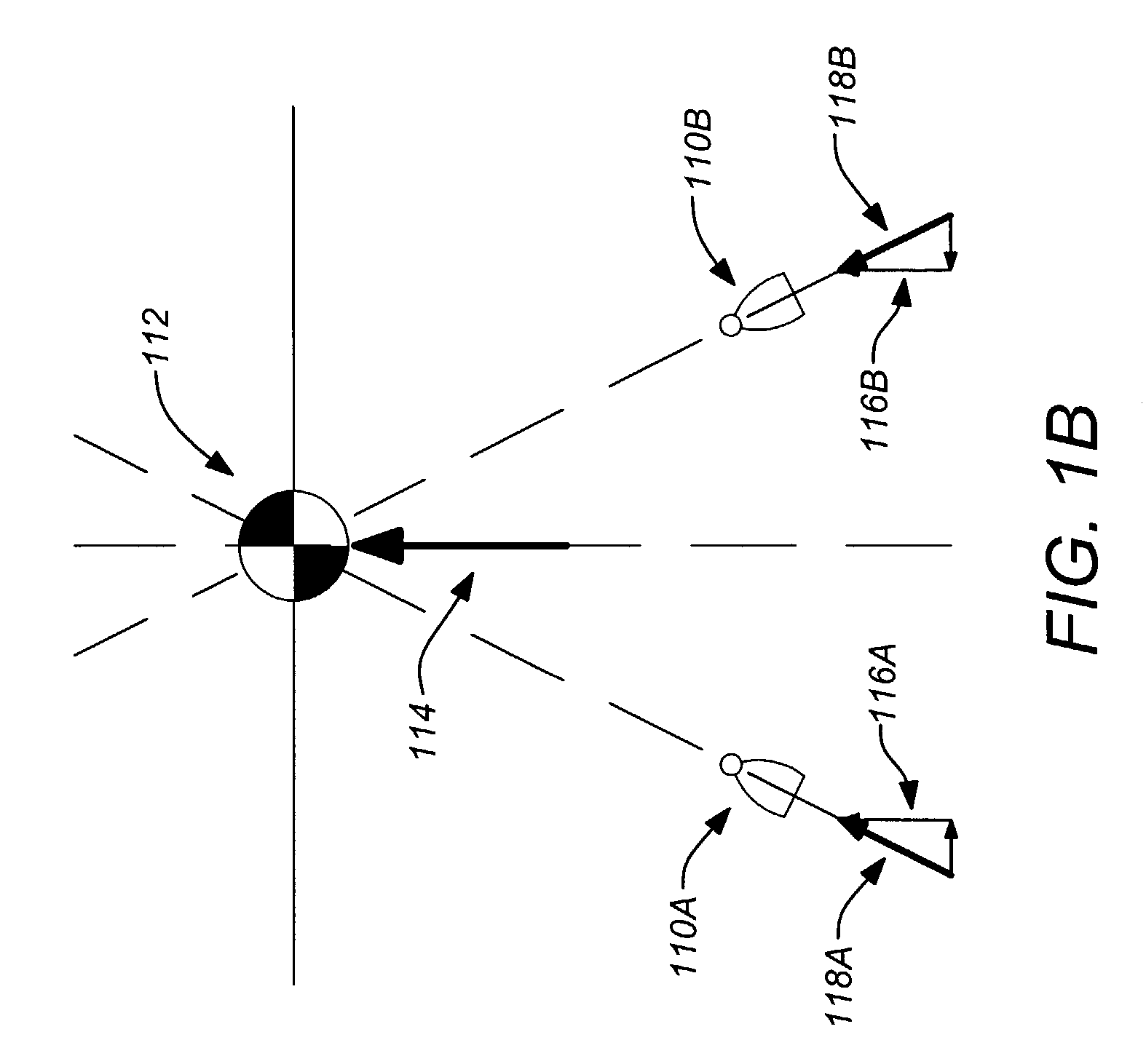Deployable spacecraft mount for electric propulsion
a technology of electric propulsion and spacecraft, which is applied in the field of spacecraft mounts for electric propulsion, can solve the problems of reducing the life of spacecraft by years, and the current spacecraft employing solar panel concentrators may also experience negative effects of xips plume interaction, so as to achieve the effect of reducing the known deleterious effects of their plume field
- Summary
- Abstract
- Description
- Claims
- Application Information
AI Technical Summary
Benefits of technology
Problems solved by technology
Method used
Image
Examples
Embodiment Construction
[0030]In the following description of the preferred embodiment, reference is made to the accompanying drawings which form a part hereof, and in which is shown by way of illustration specific embodiments in which the invention may be practiced. It is to be understood that other embodiments may be utilized and structural changes may be made without departing from the scope of the present invention.
[0031]1.0 Deployable Spacecraft Elements
[0032]As discussed above, obtaining adequate thruster offset is important to mitigate negative plume effects while maintaining acceptable thruster efficiency. Typically, spacecraft include a main body which provides the foundational platform for the spacecraft. To fit within a compact envelope for transport, e.g., within a launch vehicle shroud, many spacecraft elements (e.g., appendages and / or subsystems) can be designed to be deployable. At various stages during the launch the various elements are deployed to enable complete spacecraft functionality ...
PUM
 Login to View More
Login to View More Abstract
Description
Claims
Application Information
 Login to View More
Login to View More - R&D
- Intellectual Property
- Life Sciences
- Materials
- Tech Scout
- Unparalleled Data Quality
- Higher Quality Content
- 60% Fewer Hallucinations
Browse by: Latest US Patents, China's latest patents, Technical Efficacy Thesaurus, Application Domain, Technology Topic, Popular Technical Reports.
© 2025 PatSnap. All rights reserved.Legal|Privacy policy|Modern Slavery Act Transparency Statement|Sitemap|About US| Contact US: help@patsnap.com



